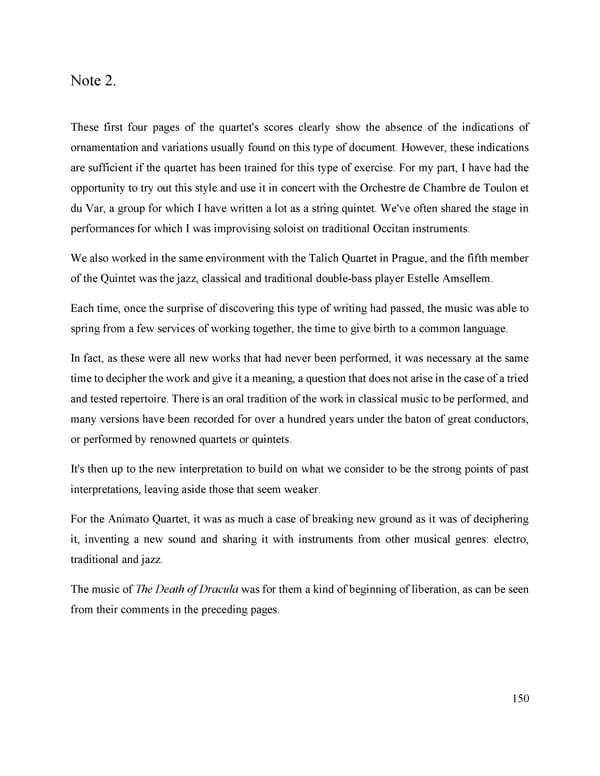Note 2. These first four pages of the quartet's scores clearly show the absence of the indications of ornamentation and variations usually found on this type of document. However, these indications are sufficient if the quartet has been trained for this type of exercise. For my part, I have had the opportunity to try out this style and use it in concert with the Orchestre de Chambre de Toulon et du Var, a group for which I have written a lot as a string quintet. We've often shared the stage in performances for which I was improvising soloist on traditional Occitan instruments. We also worked in the same environment with the Talich Quartet in Prague, and the fifth member of the Quintet was the jazz, classical and traditional double-bass player Estelle Amsellem. Each time, once the surprise of discovering this type of writing had passed, the music was able to spring from a few services of working together, the time to give birth to a common language. In fact, as these were all new works that had never been performed, it was necessary at the same time to decipher the work and give it a meaning, a question that does not arise in the case of a tried and tested repertoire. There is an oral tradition of the work in classical music to be performed, and many versions have been recorded for over a hundred years under the baton of great conductors, or performed by renowned quartets or quintets. It's then up to the new interpretation to build on what we consider to be the strong points of past interpretations, leaving aside those that seem weaker. For the Animato Quartet, it was as much a case of breaking new ground as it was of deciphering it, inventing a new sound and sharing it with instruments from other musical genres: electro, traditional and jazz. The music of The Death of Dracula was for them a kind of beginning of liberation, as can be seen from their comments in the preceding pages. 150
 Lost Analogue: Exploring Film, Music, and Interdisciplinary Methods in Education Page 150 Page 152
Lost Analogue: Exploring Film, Music, and Interdisciplinary Methods in Education Page 150 Page 152